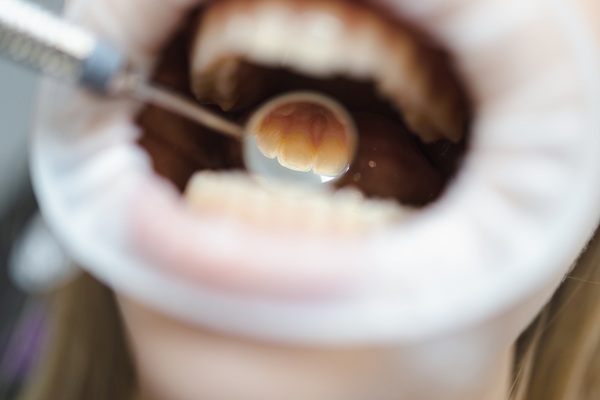Root canal obturation is a restorative dental procedure that can save teeth from being extracted. There are numerous advantages associated with having your teeth sealed through root canal obturation, including better overall dental hygiene and increased strength from reduced wear on enamel caused by acid erosion.
What is Root Canal Obturation?
Obturation of the root canal involves placing a rubber-like material called gutta-percha into the root canals, along with adhesive cement, to seal off the canal and prevent further infection or decay. This procedure helps restore the tooth’s structure and function and protect it from further damage.
What Happens During a Root Canal Treatment
Root canal obturation involves removing the infected pulp, cleaning and disinfecting the inside of the tooth, and then filling and sealing it.
Pulp Extirpation
This first step in root canal treatment involves removing the diseased or dead pulp from within the tooth’s chamber and canals using specialised dental instruments such as endodontic files. Then your dental care provider will clean out any remaining debris.
Canal Shaping & Further Disinfection
After extirpation, your dentist will shape each root canal with special tools to prepare it for obturation (filling). They may also use antiseptic solutions such as sodium hypochlorite during this stage to further help reduce bacteria inside your tooth.
Root Canal Obturation
During this step, your dentist will fill each root canal with gutta-percha, which helps prevent any remaining bacteria from entering your teeth’s interior chambers again after treatment.
Final Restoration
Your dentist will place a crown over the treated area to protect it from damage caused by chewing food or grinding teeth while sleeping at night. This crown will be made from durable materials like porcelain or gold alloy to withstand everyday wear and tear.
Is Root Canal Obturation Painful?
Local anaesthesia is typically used during root canal obturation procedures to reduce discomfort during treatment. This type of anaesthesia numbs only a specific area of your mouth so that you can remain conscious throughout the procedure without feeling pain or discomfort. Your dentist may also use sedation techniques such as nitrous oxide (laughing gas) if needed to keep you relaxed during treatment.
Causes of Pain
The leading cause of pain associated with root canal obturation is inflammation caused by bacteria in the infected pulp. Left untreated, this can lead to severe pain radiating through your jaw and face. Other causes include trauma to the area during treatment or sensitivity to hot or cold foods due to exposed nerve endings after treatment.
However, some patients may still feel pressure when their dentist drills into their teeth or uses instruments such as files for shaping purposes. In addition, there may be some soreness afterwards due to inflammation caused by bacteria in the infected pulp before treatment begins.
How Painful is Normal?
Post-treatment pain should not last more than two days if treated properly. However, if you are experiencing prolonged discomfort after your procedure, contact your dentist.
Managing Root Canal Pain
Root canal pain can be caused by several factors, including deep decay, trauma to the tooth, or infection of the pulp (the innermost layer of tissue).
When bacteria enter this sensitive area, they can cause inflammation and irritation that leads to severe discomfort. If left untreated, this infection can spread throughout your body, leading to more serious health issues such as sepsis or even death.
How Is Root Canal Pain Treated?
The first step in treating root canal pain is identifying its cause. Your dentist will take X-rays and use other diagnostic tools to determine what’s causing your discomfort.
Once they have identified the source of your pain, they may recommend one or more treatments depending on how severe it is. These treatments could include antibiotics for bacterial infections; medications like ibuprofen for inflammation, root canal therapy, crowns, fillings; extractions, or surgery.
How Can I Manage My Root Canal Pain?
Managing root canal pain requires taking steps before and after treatment to reduce discomfort levels during recovery time and minimise any potential risks associated with specific procedures like surgery or extraction.
Before beginning treatment, you should talk with your dentist about any over-the-counter medications you might need while recovering from dental work to prepare you for possible side effects, such as nausea or dizziness due to anaesthesia use. Additionally, ensure you get plenty of rest following each appointment since fatigue can worsen symptoms related to root canal pain.
When to Get Help From Your Dentist
When you experience any of these symptoms below, it’s time to see your dentist for root canal obturation:
- Severe pain when chewing food or applying pressure on the affected area
- Sensitivity to hot and cold temperatures
- Discolouration of teeth
- Swollen gums around the affected area
- A pimple-like bump on your gum near an infected tooth
Get the Best Dental Care Possible
Root canal obturation is a crucial procedure for maintaining oral health. At Bellevue Hill Dental, our experienced dentists are here to help you get the best care possible. We use advanced techniques and materials to ensure successful root canal treatments that will keep your teeth healthy and strong for years to come. Book an appointment today so that we can provide you with the quality dental care you need.




